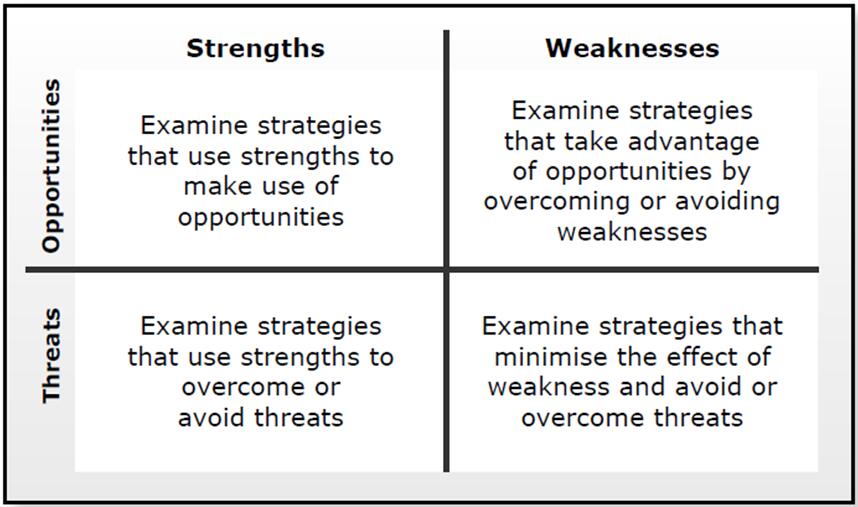所谓TOWS分析法即态势分析,就是将与研究对象密切相关的各种主要内部优势、劣势和外部的机会和威胁等,通过调查列举出来,并依照矩阵形式排列,然后用系统分析的思想,把各种因素相互匹配起来加以分析,从中得出一系列相应的结论,而结论通常带有一定的决策性。 这种分析法也被称之为“倒SWOT分析法”。SWOT方法自形成以来,广泛应用于战略研究与竞争分析,成为战略管理和竞争情报的重要分析工具。分析直观、使用简单是它的重要优点。即使没有精确的数据支持和更专业化的分析工具,也可以得出有说服力的结论。
SWOT analysis can be used to summarise the key issues arising from the analysis of the strategic position of an organisation.
These are summarised as Strengths, Weaknesses, Opportunities and Threats.
TOWS analysis is a tool used for generating strategic options that take account of the results of the SWOT analysis. It aims to identify strategies that would be appropriate to an organization (as they would fit the strategic position summarised in the SWOT analysis).
Within the TOWS matrix, the strategies are categorised into one of four categories, matching the SWOT analysis, as follows:

TOWS分析法也被称为倒SWOT分析法,其分析顺序与SWOT分析法恰好相反,首先分析市场的机会和危险,再分析企业的优势和劣势。SWOT分析法首先分析自己,关注企业的优势和劣势,再分析市场是否有机会或者危险。而事实上,人们在制定竞争策略的时候首先看到的往往不是自己,而是市场,所以先确认市场机会,然后根据企业的优势判断企业是否能够把握机会,以及是否能够避免市场上存在的威胁,往往更具有实用性。

精品好课免费试听
